Sustainable Fabrics Compared: Bamboo or Hemp – Which is Better?
Understanding bamboo and hemp fabrics
There are so many fabric options out there, it’s important you understand what you’re looking at. So with that in mind, what exactly are these two sustainable fabrics?
What is bamboo fabric?
Bamboo fabric is derived from bamboo plants, using a chemical or mechanical process resulting in viscose or lyocell bamboo respectively. It has a soft and smooth texture, comparable to silk, and is used to make gym wear, clothing, bedding, towels and more. Breathable and hypoallergenic, it’s great for babies and those with sensitive skin.
What is hemp fabric?
This is a fabric created from the stalks of the hemp plant – it has a slightly textured feel, and is incredibly durable. It is used for clothing, furniture upholstery and to make artists’ canvases! Hemp has a more rustic, rugged aesthetic, feeling incredibly natural.
Environmental sustainability
Sustainability is key when choosing the perfect fabric for your needs. How do these two fabrics compare when it comes to being eco-friendly?
Bamboo fabric: the eco-friendly claim
The bamboo plant renews rapidly, requiring minimal water and zero pesticides, sequestering carbon as it grows. As a fabric it’s biodegradable and durable, but is often processed using chemicals. However, newer bamboo lyocell production methods are much more eco-friendly! This process reuses all of the water involved, too, so it’s really high on the list of sustainable methods.
Hemp fabric: the sustainable contender
The hemp plant is extremely durable and grows quickly without the need for pesticides; thanks to crop rotation it improves soil health, and it requires little water. The fabric needs only minimal processing, and is fully biodegradable at the end of its lifespan.
| Category | Bamboo | Hemp |
|---|---|---|
| Water usage | Very minimal | Minimal |
| Pesticide reliance | Zero | Zero |
| Land use | Very minimal | Minimal |
| Biodegradability | Fully | Fully |

![[MattressTopper] Panda London Memory Foam Bamboo Mattress Topper package box](http://pandalondon.com/cdn/shop/files/Bamboo_Mattress_Topper_Package_Box.webp?v=1742301823&width=1500)
![[MattressTopper] Panda London Memory Foam Bamboo Mattress Topper on the floor](http://pandalondon.com/cdn/shop/products/Panda-Memory-Foam-Bamboo-Mattress-Topper-Yoga-e1624045454555.jpg?v=1758795458&width=1000)
![[MattressTopper] Bamboo Mattress Topper Lifestyle Image with Memory Foam Pillows Product Page](http://pandalondon.com/cdn/shop/files/Bamboo_Mattress_Topper_Lifestyle_Image_with_Memory_Foam_Pillows_Product_Page.webp?v=1758795458&width=800)
![[MattressTopper] Bamboo Mattress Topper Lifestyle Image with Bamboo Pillows In the Garden room Product Page](http://pandalondon.com/cdn/shop/files/Bamboo_Mattress_Topper_Lifestyle_Image_with_Bamboo_Pillows_In_the_Garden_room_Product_Page.webp?v=1758795458&width=800)
![[MattressTopper] Panda London Memory Foam Bamboo Mattress Topper side](http://pandalondon.com/cdn/shop/files/Mattress_Topper_Isolated_-_resized.jpg?v=1758795458&width=800)
![[HybridMattressPro] Main Image for Hybrid Bamboo Mattress Pro with all awards](http://pandalondon.com/cdn/shop/files/Hybrid_Bamboo_Mattress_Pro_Main_product_Image_with_awards.webp?v=1753971649&width=1000)
![[HybridMattressPro] Breathable Hybrid Bamboo Mattress](http://pandalondon.com/cdn/shop/products/Breathable-Hybrid-Bamboo-Mattress.jpg?v=1753971649&width=1920)
![[HybridMattressPro] Hybrid Bamboo Mattress Pro Cover Zip](http://pandalondon.com/cdn/shop/files/Hybrid_Bamboo_Mattress_Cover.jpg?v=1753971649&width=800)
![[HybridMattressPro] Panda Hybrid Bamboo Mattress Pro](http://pandalondon.com/cdn/shop/files/Hybrid_Bambo_Memory_Foam_Mattress_-_BioCell_Foam_x.jpg?v=1755095108&width=800)
![[HybridMattressPro] Couple on a Hybrid Bamboo Mattress Pro](http://pandalondon.com/cdn/shop/files/Hybrid_Bamboo_Mattress_Couple.jpg?v=1753971649&width=800)
![[CloudDuvet] Panda London The Cloud Bamboo Duvet Packaging](http://pandalondon.com/cdn/shop/products/Panda-London-The-Cloud-Bamboo-Duvet-Panda-Life-scaled_00a651ad-4ca3-4105-b520-12a94c1a4f71.jpg?v=1713363286&width=1920)
![[CloudDuvet] Panda London The Cloud Bamboo Duvet Rolled](http://pandalondon.com/cdn/shop/products/Duvet-Listing-Images03.jpg?v=1764079307&width=1000)
![[CloudDuvet] Panda London The Cloud Bamboo Duvet Girl Huggin a Duvet on the Bed](http://pandalondon.com/cdn/shop/files/Cloud_Bamboo_Duvet_-_Lady_Hugging_it_on_Bed_LifestyleImage.jpg?v=1764079307&width=1000)
![[CloudDuvet] Panda London The Cloud Bamboo Duvet Guy In the Air with Cloud Bamboo Duvet](http://pandalondon.com/cdn/shop/files/GuyonaHybridBambooMattresswithCloudDuvet.jpg?v=1764079307&width=2000)
![[CloudDuvet] Panda Cloud Duvet Winter on the bed lifestyle image](http://pandalondon.com/cdn/shop/files/Panda_Cloud_Duvet_Winter_on_the_Bed_Lifestyle-1_image.jpg?v=1764079307&width=1000)
![[BBWhite] White 100% Bamboo Bedding](http://pandalondon.com/cdn/shop/files/Pure_White_Full_Bed.webp?v=1719581797&width=1000)
![[BBWhite] White 100% Bamboo Bedding Texture](http://pandalondon.com/cdn/shop/files/100_Bamboo_Bedding_-_Pure_White_-_Close_Up_02.webp?v=1762879591&width=1000)
![[BBWhite] White 100% Bamboo Bedding Woman in bed sleeping](http://pandalondon.com/cdn/shop/files/100-Bamboo-Bedding-Set-Pure-White-BB.webp?v=1762879591&width=768)
![[BBWhite] White 100% Bamboo Bedding Woman Duvet cover buttons](http://pandalondon.com/cdn/shop/files/hand_and_buttons_1.webp?v=1762879591&width=1000)
![[BBWhite] White 100% Bamboo Bedding Woman in bed looking and smiling-](http://pandalondon.com/cdn/shop/files/SatonMadeBed-White100_BambooBedding-white_-_BB_SideShot1000x1000.webp?v=1762879591&width=980)
![[BBUrbanGrey] Urban Grey 100% Bamboo Bedding](http://pandalondon.com/cdn/shop/files/Made_Bed_-_Urban_Grey_-_Wide_Shot_2_1_1.webp?v=1762880019&width=1000)
![[BBUrbanGrey] Cloud Duvet Urban Grey 100% Bamboo Bedding Set](http://pandalondon.com/cdn/shop/files/Cloud_Duvet_-_Grey_-_Close_up_2.webp?v=1762880019&width=1000)
![[BBUrbanGrey] Urban Grey 100% Bamboo Bedding Set Woman sitting on the bed](http://pandalondon.com/cdn/shop/files/Sat_in_Bed_-_Grey_100__Bamboo_Bedding_-_Wide_Shot.webp?v=1762880019&width=1000)
![[BBUrbanGrey] Urban Grey 100% Bamboo Bedding Set Woman Duvet buttons Panda London](http://pandalondon.com/cdn/shop/files/hand_buttons_grey_bedding_1.webp?v=1762880019&width=1000)
![[BBUrbanGrey] Woman Sitting on the Bamboo Bedding with coffee](http://pandalondon.com/cdn/shop/files/SatonMadeBed-White100_BambooBedding-SideShot1000x1000.jpg?v=1762880019&width=1000)
![[BBNavyBlue] Deep Sea Navy Blue 100% Bamboo Bedding](http://pandalondon.com/cdn/shop/files/Made_Bed_-_Navy_-_Wide_Shot_3_copy.webp?v=1762879591&width=1000)
![[BBNavyBlue] Deep Sea Navy Blue 100% Bamboo Bedding Texture](http://pandalondon.com/cdn/shop/files/Cloud_Duvet_-_Navy_-_Close_up_2.webp?v=1762880019&width=1000)
![[BBNavyBlue] Deep Sea Navy Blue 100% Bamboo Bedding Woman Sitting on the bed](http://pandalondon.com/cdn/shop/files/Sat_Up_in_Bed_-_Navy_100__Bamboo_Bedding_-_Hands_on_Bed.webp?v=1762880019&width=1000)
![[BBNavyBlue] Deep Sea Navy Blue 100% Bamboo Bedding Duvet Cover Buttons](http://pandalondon.com/cdn/shop/files/Cloud_Duvet_Cover_Buttons_-_Deep_Sea_Navy.webp?v=1762880019&width=1000)
![[BBNavyBlue] Deep Sea Navy Blue 100% Bamboo Bedding Woman sitting on the bed looking away](http://pandalondon.com/cdn/shop/files/SatonMadeBed-White100_BambooBedding-SideShot1000x1000-001.webp?v=1762880019&width=980)
![[BBPink] Vintage Pink Blue 100% Bamboo Bedding](http://pandalondon.com/cdn/shop/files/Made_Bed_-_Pink_-_Wide_Shot_copy.webp?v=1762879591&width=1000)
![[BBPink] Vintage Pink Texture 100% Bamboo Bedding](http://pandalondon.com/cdn/shop/files/Cloud_Duvet_-_Pink_-_Close_up_2.webp?v=1762880019&width=1000)
![[BBPink] Vintage Pink Woman Sitting on the 100% Bamboo Bedding](http://pandalondon.com/cdn/shop/files/Sat_Up_in_Bed_-_Pink_-_Hands_on_Bed.webp?v=1762880019&width=1000)
![[BBPink] Vintage Pink Woman Sitting on the 100% Bamboo Bedding Duvet Cover](http://pandalondon.com/cdn/shop/files/Cloud_Duvet_Cover_Buttons_-_Vintage_Pink.webp?v=1762880019&width=1000)
![[BBPink] Vintage Pink Woman Sitting on the 100% Bamboo Bedding Woman looking far away](http://pandalondon.com/cdn/shop/files/SatonMadeBed-White100_BambooBedding-SideShot1000x1000-001_Vintage_Pink.webp?v=1762880019&width=980)
![[BBGrey] Light Grey 100% Bamboo Bedding](http://pandalondon.com/cdn/shop/files/Made_Bedding_in_Bedroom_-_Urban_Grey_-_Wide_Shot.webp?v=1762879591&width=1000)
![[BBGrey] Light Grey 100% Bamboo Bedding texture](http://pandalondon.com/cdn/shop/files/Texture17.webp?v=1762880019&width=1000)
![[BBGrey] Light Grey 100% Bamboo Bedding with Woman smiling](http://pandalondon.com/cdn/shop/files/Sat_Up_in_Bed_-_Grey_-_Hands_on_Bed.webp?v=1762880019&width=1000)
![[BBGrey] Light Grey 100% Bamboo Bedding with Duvet Cover buttons](http://pandalondon.com/cdn/shop/files/Cloud_Duvet_Cover_Buttons_-_Quiet_Grey.webp?v=1762880019&width=1000)
![[BBGrey] Light Grey 100% Bamboo Bedding with Woman smiling and sitting coffee](http://pandalondon.com/cdn/shop/files/SatonMadeBed-White100_BambooBedding-SideShot1000x1000-002-_Grey.webp?v=1762880019&width=980)
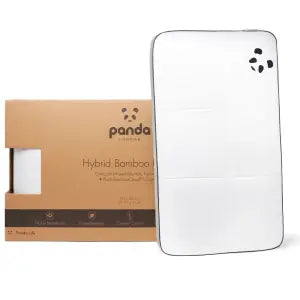 Hybrid Bamboo Pillow
Hybrid Bamboo Pillow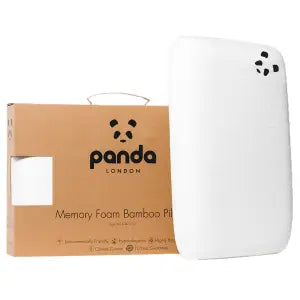 Memory Foam Bamboo Pillow
Memory Foam Bamboo Pillow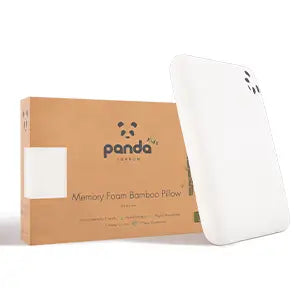 Kids Memory Foam Bamboo Pillow
Kids Memory Foam Bamboo Pillow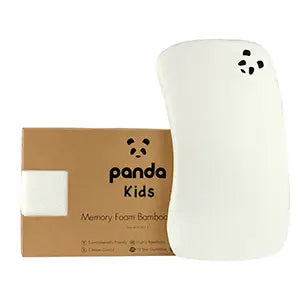 Baby Memory Foam Bamboo Pillow
Baby Memory Foam Bamboo Pillow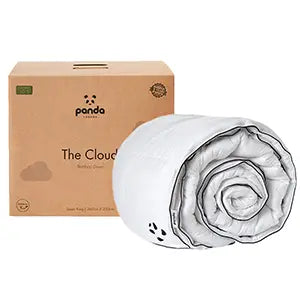 Panda Cloud Duvet
Panda Cloud Duvet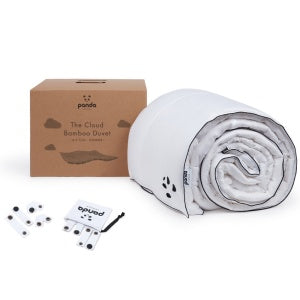 Bamboo Summer Duvet
Bamboo Summer Duvet Kids Cloud Duvet
Kids Cloud Duvet![[FSKids] Kids-Bamboo_Bedding_Duvet_Cover_Grey](http://pandalondon.com/cdn/shop/files/Kids-Bamboo_Bedding_Duvet_Cover_Grey.webp?v=1745334928&width=1000)

![[PureWhiteDC] White Duvet Cover 100% Bamboo Bedding buttons](http://pandalondon.com/cdn/shop/files/ButtonsDuvetCoverPureWhite.jpg?v=1714123697&width=2000)
![[PureWhiteDC] White Duvet Cover 100% Bamboo Bedding Package](http://pandalondon.com/cdn/shop/files/White_Duvet_Cover_Bamboo_Bedding_Package.webp?v=1721052312&width=1811)
![[PureWhiteDC] White Duvet Cover 100% Bamboo Bedding Stripes](http://pandalondon.com/cdn/shop/files/White_Duvet_Cover_Straps_100_Bamboo_Bedding.webp?v=1721052311&width=1000)
![[PureWhiteDC] White Duvet Cover 100% Bamboo Bedding Texture](http://pandalondon.com/cdn/shop/files/White_Duvet_Cover_100_Bamboo_Bedding_-_Pure_White_-_Duvet_Cover_Texture.webp?v=1721052312&width=1000)
![[PureWhiteDC] White Duvet Cover 100% Bamboo Bedding Woman buttons hands](http://pandalondon.com/cdn/shop/files/White_Duvet_Cover_-_Woman_hands_and_buttons.webp?v=1721052312&width=1000)
![[VintagePinkDC] Vintage Pink Duvet Cover 100% Bamboo Bedding buttons](http://pandalondon.com/cdn/shop/files/Vintage_Pink_Duvet_Cover_Bamboo_Bedding_Buttons.webp?v=1743769041&width=1000)
![[VintagePinkDC] Vintage Pink Duvet Cover 100% Bamboo Bedding package](http://pandalondon.com/cdn/shop/files/Vintage_Pink_Duvet_Cover_Package_Bamboo_Bedding.webp?v=1743769041&width=1811)
![[VintagePinkDC] Vintage Pink Duvet Cover 100% Bamboo Bedding Stripes](http://pandalondon.com/cdn/shop/files/Vintage_Pink_Duvet_Cover_Bamboo_Bedding_Stripes.jpg?v=1721052469&width=1000)
![[VintagePinkDC] Vintage Pink Duvet Cover 100% Bamboo Bedding Texture](http://pandalondon.com/cdn/shop/files/Vintage_Pink_Duvet_Cover_Bamboo_Bedding_Texture.webp?v=1743769041&width=1000)
![[VintagePinkDC] Vintage Pink Duvet Cover 100% Bamboo Bedding Woman In Bed Sitting](http://pandalondon.com/cdn/shop/files/Vintage_Pink_Duvet_Cover_Bamboo_Bedding_Woman_in_bed.webp?v=1721052470&width=1000)
![[NavyDC] Deep Sea Navy Duvet Cover 100% Bamboo Bedding Buttons](http://pandalondon.com/cdn/shop/files/Deep_Sea_Navy_Buttons_Duvet_Cover_Bamboo_Bedding.webp?v=1744115105&width=1000)
![[NavyDC] Deep Sea Navy Duvet Cover 100% Bamboo Bedding Package](http://pandalondon.com/cdn/shop/files/Deep_Sea_Navy_Package_Duvet_Cover_Bamboo_Bedding.webp?v=1744115105&width=1811)
![[NavyDC] Deep Sea Navy Duvet Cover 100% Bamboo Bedding Stripes](http://pandalondon.com/cdn/shop/files/Deep_Sea_Navy_Stripes_Duvet_Cover_Bamboo_Bedding.webp?v=1721053122&width=1000)
![[NavyDC] Deep Sea Navy Duvet Cover 100% Bamboo Bedding Texture](http://pandalondon.com/cdn/shop/files/Deep_Sea_Navy_Texture_Duvet_Cover_Bamboo_Bedding.webp?v=1744115105&width=1000)
![[NavyDC] Deep Sea Navy Duvet Cover 100% Bamboo Bedding Woman in bed sitting](http://pandalondon.com/cdn/shop/files/Deep_Sea_Navy_Woman_in_bed_Duvet_Cover_Bamboo_Bedding.webp?v=1721053123&width=1000)
![[GreyDC] Quiet Grey Duvet Cover 100% Bamboo Bedding Buttons](http://pandalondon.com/cdn/shop/files/Quiet_Grey_Cloud_Duvet_Cover_Bamboo_Bedding_Buttons.webp?v=1721053361&width=1000)
![[GreyDC] Quiet Grey Duvet Cover 100% Bamboo Bedding Package](http://pandalondon.com/cdn/shop/files/Quiet_Grey_Package_Duvet_Cover_Bamboo_Bedding_Buttons.webp?v=1721053360&width=1811)
![[GreyDC] Quiet Grey Duvet Cover 100% Bamboo Bedding Stripes](http://pandalondon.com/cdn/shop/files/Quiet_Grey_Stripes_Duvet_Cover_Bamboo_Bedding_Buttons.webp?v=1721053360&width=1000)
![[GreyDC] Quiet Grey Duvet Cover 100% Bamboo Bedding Texture](http://pandalondon.com/cdn/shop/files/Quiet_Grey_Texture_Duvet_Cover_Bamboo_Bedding_Buttons.webp?v=1721053361&width=1000)
![[GreyDC] Quiet Grey Duvet Cover 100% Bamboo Bedding Woman sitting in bed smiling](http://pandalondon.com/cdn/shop/files/Quiet_Grey_woman_in_bed_Duvet_Cover_Bamboo_Bedding_Buttons.webp?v=1721053361&width=1000)
![[UrbanGreyDC] Urban Grey Duvet Cover 100% Bamboo Bedding Buttons Woman hand](http://pandalondon.com/cdn/shop/files/Urban_Grey_Duvet_Grey_Bamboo_Bedding_buttons.webp?v=1721053513&width=1000)
![[UrbanGreyDC] Urban Grey Duvet Cover 100% Bamboo Bedding Buttons Package](http://pandalondon.com/cdn/shop/files/Duvet_Cover_Urban_Grey_Package_Bamboo_Bedding.webp?v=1721053512&width=1811)
![[UrbanGreyDC] Urban Grey Duvet Cover 100% Bamboo Bedding Stripes](http://pandalondon.com/cdn/shop/files/Urban_Grey_Duvet_Grey_Bamboo_Bedding_Stripes.webp?v=1721053512&width=1000)
![[UrbanGreyDC] Urban Grey Duvet Cover 100% Bamboo Bedding Buttons Texture](http://pandalondon.com/cdn/shop/files/Urban_Grey_Duvet_Grey_Bamboo_Bedding_Texture.webp?v=1721053513&width=1000)
![[UrbanGreyDC] Urban Grey Duvet Cover 100% Bamboo Bedding Buttons Woman sitting in bed smiling](http://pandalondon.com/cdn/shop/files/Urban_Grey_Duvet_Grey_Bamboo_Bedding_Woman_in_bed.webp?v=1721053513&width=1000)
![[BBWhiteFS] White Fitted Sheets 100% Bamboo Bedding](http://pandalondon.com/cdn/shop/files/224604_03_copy.webp?crop=region&crop_height=940&crop_left=241&crop_top=0&crop_width=940&v=1719585248&width=1423)
![[BBWhiteFS] White Fitted Sheets 100% Bamboo Bedding Texture](http://pandalondon.com/cdn/shop/files/100_Bamboo_Bedding_-_Pure_White_-_Close_Up_11111.webp?v=1719585940&width=1000)
![[BBWhiteFS] Bag Packkage Fitted Sheet White](http://pandalondon.com/cdn/shop/files/Pure-White-Fitted-Sheet-Package_jpg.webp?v=1719586047&width=1765)
![[BBNavyFS] Navy Deep Sea Navy BLue White Fitted Sheets 100% Bamboo Bedding](http://pandalondon.com/cdn/shop/files/236772_02.webp?crop=region&crop_height=940&crop_left=241&crop_top=0&crop_width=940&v=1719585248&width=1423)
![[BBNavyFS] Navy Deep Sea Navy BLue White Fitted Sheets 100% Bamboo Bedding Texture](http://pandalondon.com/cdn/shop/files/Cloud_Duvet_-_Navy_-_Close_up_33333.webp?v=1719585941&width=1000)
![[BBNavyFS] Navy Deep Sea Navy BLue White Fitted Sheets 100% Bamboo Bedding Package](http://pandalondon.com/cdn/shop/files/Deep-Sea-Navy-Fitted-Sheet-Package_jpg.webp?v=1719586647&width=1500)
![[BBPinkFS] Pink Fitted Sheets 100% Bamboo Bedding Video full](http://pandalondon.com/cdn/shop/files/236772_01.webp?crop=region&crop_height=940&crop_left=241&crop_top=0&crop_width=940&v=1719585247&width=1423)
![[BBPinkFS] Pink Fitted Sheets 100% Bamboo Bedding Texture](http://pandalondon.com/cdn/shop/files/Cloud_Duvet_-_Pink_-_Close_up_4444.webp?v=1719585941&width=1000)
![[BBPinkFS] Pink Fitted Sheets 100% Bamboo Bedding Package Vintage Pink](http://pandalondon.com/cdn/shop/files/Vintage-Pink-Fitted-Sheet-Package_jpg.webp?v=1713363898&width=1765)
![[BBGreyFS] Grey Fitted Sheets 100% Bamboo Bedding](http://pandalondon.com/cdn/shop/files/224604_02.webp?crop=region&crop_height=940&crop_left=241&crop_top=0&crop_width=940&v=1719585248&width=1423)
![[BBGreyFS] Grey Fitted Sheets 100% Bamboo Bedding Texture](http://pandalondon.com/cdn/shop/files/Cloud_Duvet_-_Silver_Grey_-_Close_up_555.webp?v=1719585941&width=1000)
![[BBGreyFS] Grey Fitted Sheets 100% Bamboo Bedding Package](http://pandalondon.com/cdn/shop/files/Fitted-Sheet-Quiet-Grey-768x768_7b634d25-6b4d-4e42-aaeb-79d442b0c1d3.jpg?v=1719586647&width=768)
![[BBUrbanGreyFS] UrbanGrey Fitted Sheets 100% Bamboo Bedding](http://pandalondon.com/cdn/shop/files/224604_01.webp?crop=region&crop_height=940&crop_left=241&crop_top=0&crop_width=940&v=1719585247&width=1423)
![[BBUrbanGreyFS] UrbanGrey Fitted Sheets 100% Bamboo Bedding Texture](http://pandalondon.com/cdn/shop/files/Cloud_Duvet_-_Grey_-_Close_up_2222.webp?v=1719585941&width=1000)
![[BBUrbanGreyFS] UrbanGrey Fitted Sheets 100% Bamboo Bedding Package](http://pandalondon.com/cdn/shop/files/Fitted-Sheet-Urban-Grey-768x768.jpg?v=1719586047&width=768)
![[GreyDCFrench] Duvet Cover Midnight Grey French Linen](http://pandalondon.com/cdn/shop/files/BambooandFrenchLinen-SilverLiningGrey-DuvetCoverPackaging.webp?v=1722000040&width=1818)
![[GreyDCFrench] Duvet Cover Grey French Linen Pillow](http://pandalondon.com/cdn/shop/files/Bamboo_and_French_Linen_-_Silver_Lining_Grey_-_Duvet_Cover_Pillows.webp?v=1722000595&width=1000)
![[GreyDCFrench] Duvet Cover Grey French Linen Pillow Set](http://pandalondon.com/cdn/shop/files/Bamboo_and_French_Linen_-_Silver_Lining_Grey_-_Duvet_Cover_Set.webp?v=1722000595&width=1000)
![[GreyDCFrench] Duvet Cover Grey French Linen Corner of](http://pandalondon.com/cdn/shop/files/Bamboo_and_French_Linen_-_Silver_Lining_Grey_-_Duvet_Cover_Corner.webp?v=1722000595&width=1000)
![[GreyDCFrench] Duvet Cover Grey French Linen Texture](http://pandalondon.com/cdn/shop/files/Bamboo_and_French_Linen_-_Silver_Lining_Grey_-_Duvet_Cover_Texture.webp?v=1722000595&width=1500)
![[NavyDCFrench] Duvet Cover Midnight Navy French Linen](http://pandalondon.com/cdn/shop/files/BambooandFrenchLinen-MidnightNavy-DuvetCoverPackaging.webp?v=1722000040&width=1818)
![[NavyDCFrench] Duvet Cover Midnight Navy French Linen Pillow](http://pandalondon.com/cdn/shop/files/Bamboo_and_French_Linen_-_Navy_-_Duvet_Cover_Pillow.webp?v=1722000803&width=1000)
![[NavyDCFrench] Duvet Cover Midnight Navy French Linen Set](http://pandalondon.com/cdn/shop/files/Bamboo_and_French_Linen_-_Navy_-_Duvet_Cover_Set.webp?v=1722000803&width=1000)
![[NavyDCFrench] Duvet Cover Midnight Navy French Linen Corner of](http://pandalondon.com/cdn/shop/files/Bamboo_and_French_Linen_-_Navy_-_Duvet_Cover_Corner.webp?v=1722000805&width=1000)
![[NavyDCFrench] Duvet Cover Midnight Navy French Linen Texture](http://pandalondon.com/cdn/shop/files/Bamboo_and_French_Linen_-_Navy_-_Duvet_Cover_Texture.webp?v=1722000803&width=1500)
![[NaturalDCFrench] Duvet Cover Midnight Natural French Linen](http://pandalondon.com/cdn/shop/files/BambooandFrenchLinen-Natural-DuvetCoverPackaging.webp?v=1722000040&width=1818)
![[NaturalDCFrench] Duvet Cover Midnight Natural French Linen Pillow](http://pandalondon.com/cdn/shop/files/Bamboo_and_French_Linen_-_Natural_-_Duvet_Cover_Pillow.webp?v=1722000917&width=1000)
![[NaturalDCFrench] Duvet Cover Midnight Natural French Linen Set](http://pandalondon.com/cdn/shop/files/Bamboo_and_French_Linen_-_Natural_-_Duvet_Cover_Pillow_Set.webp?v=1722000916&width=2000)
![[NaturalDCFrench] Duvet Cover Midnight Natural French Linen Corner of texture](http://pandalondon.com/cdn/shop/files/Bamboo_and_French_Linen_-_Natural_-_Duvet_Cover_Corner_if_texture.webp?v=1722000917&width=1000)
![[NaturalDCFrench] Duvet Cover Midnight Natural French Linen Texture](http://pandalondon.com/cdn/shop/files/Bamboo_and_French_Linen_-_Natural_-_Duvet_Cover_Texture.webp?v=1722000917&width=1500)
![[SilverGreyPillowcases] BambooFrenchLinen Pillowcases SilverGrey Packaging](http://pandalondon.com/cdn/shop/files/BambooFrenchLinen-SilverLightGrey-PillowcasePackaging.webp?v=1721993664&width=1818)
![[SilverGreyPillowcases] BambooFrenchLinen Pillowcases Pillows](http://pandalondon.com/cdn/shop/files/LightGrey_-_BambooFrenchLinen-_Pillowcases_Set.webp?v=1721998535&width=1000)
![[SilverGreyPillowcases] BambooFrenchLinen Pillowcases Bed](http://pandalondon.com/cdn/shop/files/LightGrey_-_BambooFrenchLinen-_Pillowcases_Set_02.webp?v=1721998534&width=1000)
![[SilverGreyPillowcases] BambooFrenchLinen Pillowcases Texture](http://pandalondon.com/cdn/shop/files/LightGrey_-_BambooFrenchLinen-_Pillowcases_Corner.webp?v=1721998535&width=1000)
![[SilverGreyPillowcases] BambooFrenchLinen Pillowcases Two Pillows](http://pandalondon.com/cdn/shop/files/LightGrey_-_BambooFrenchLinen-_Pillowcases_03.jpg?v=1721998534&width=1000)
![[DeepSeaNavyPillowcases] BambooFrenchLinen Pillowcases Packaging](http://pandalondon.com/cdn/shop/files/BambooFrenchLinen-DeepSeaNavy-PillowcasePackaging.webp?v=1721993664&width=1818)
![[DeepSeaNavyPillowcases] BambooFrenchLinen Pillowcases Pillows](http://pandalondon.com/cdn/shop/files/MidnightNavy_-_BambooFrenchLinen-_Pillowcases_01.webp?v=1721998583&width=1000)
![[DeepSeaNavyPillowcases] BambooFrenchLinen Pillowcases Full Set](http://pandalondon.com/cdn/shop/files/MidnightNavy_-_BambooFrenchLinen-_Pillowcases_03.webp?v=1721998584&width=1000)
![[DeepSeaNavyPillowcases] BambooFrenchLinen Pillowcases Texture](http://pandalondon.com/cdn/shop/files/MidnightNavy_-_BambooFrenchLinen-_Pillowcases_Corner.webp?v=1721998585&width=1000)
![[DeepSeaNavyPillowcases] BambooFrenchLinen Pillowcases Two pillows](http://pandalondon.com/cdn/shop/files/MidnightNavy_-_BambooFrenchLinen-_Pillowcases_Two_Pillows.jpg?v=1721998583&width=1000)
![[HimalayanPinkPillowcases] BambooFrenchLinen Pillowcases Packaging](http://pandalondon.com/cdn/shop/files/BambooFrenchLinen-HimalayanPink-PillowcasePackaging.webp?v=1721993664&width=1818)
![[HimalayanPinkPillowcases] BambooFrenchLinen Pillowcases Pillows](http://pandalondon.com/cdn/shop/files/HimalayanPink_-_BambooFrenchLinen-_Pillowcases_Set.webp?v=1721998621&width=1000)
![[HimalayanPinkPillowcases] BambooFrenchLinen Pillowcases Full Set](http://pandalondon.com/cdn/shop/files/HimalayanPink_-_BambooFrenchLinen-_Pillowcases_02.webp?v=1721998620&width=1000)
![[HimalayanPinkPillowcases] BambooFrenchLinen Pillowcases Texture](http://pandalondon.com/cdn/shop/files/HimalayanPink_-_BambooFrenchLinen-_Pillowcases_Texture_Corner.webp?v=1721998619&width=1000)
![[HimalayanPinkPillowcases] BambooFrenchLinen Pillowcases Two pillows](http://pandalondon.com/cdn/shop/files/HimalayanPink_-_BambooFrenchLinen-_Pillowcases_Two_Pillows.jpg?v=1721998620&width=1000)
![[SlateGreyPillowcases] BambooFrenchLinen Pillowcases Packaging](http://pandalondon.com/cdn/shop/files/BambooFrenchLinen-SlateGrey-PillowcasePackaging.webp?v=1721993664&width=1818)
![[SlateGreyPillowcases] BambooFrenchLinen Pillowcases Pillow](http://pandalondon.com/cdn/shop/files/SlateGrey_-_BambooFrenchLinen-_Pillowcases_01.webp?v=1721998654&width=1000)
![[SlateGreyPillowcases] BambooFrenchLinen Pillowcases Full set](http://pandalondon.com/cdn/shop/files/SlateGrey_-_BambooFrenchLinen-_Pillowcases_02.webp?v=1721998654&width=1000)
![[SlateGreyPillowcases] BambooFrenchLinen Pillowcases Texture](http://pandalondon.com/cdn/shop/files/SlateGrey_-_BambooFrenchLinen-_CornerTexture.webp?v=1721998653&width=1000)
![[SlateGreyPillowcases] BambooFrenchLinen Pillowcases Two pillows](http://pandalondon.com/cdn/shop/files/SlateGrey_-_BambooFrenchLinen-_Pillowcases_02_Two_Pillows.jpg?v=1721998654&width=1000)
![[NaturalPillowcases] BambooFrenchLinen Pillowcases Natural Packaging](http://pandalondon.com/cdn/shop/files/BambooFrenchLinen-Natural-PillowcasePackaging.webp?v=1721993664&width=1818)
![[NaturalPillowcases] BambooFrenchLinen Pillowcases Natural Pillow](http://pandalondon.com/cdn/shop/files/Natural_-_BambooFrenchLinen-_Pillowcases_01.webp?v=1721998693&width=1000)
![[NaturalPillowcases] BambooFrenchLinen Pillowcases Natural Pillow on the bed](http://pandalondon.com/cdn/shop/files/Natural_-_BambooFrenchLinen-_Pillowcases_03.webp?v=1721998693&width=2000)
![[NaturalPillowcases] BambooFrenchLinen Pillowcases Natural Texture](http://pandalondon.com/cdn/shop/files/Natural_-_BambooFrenchLinen-_Pillowcases_Corner.webp?v=1721998693&width=1000)
![[NaturalPillowcases] BambooFrenchLinen Pillowcases Natural Two pillow](http://pandalondon.com/cdn/shop/files/Natural_-_BambooFrenchLinen-_Pillowcases_Two_Pillows.jpg?v=1721998692&width=1000)
![[CoconutWhitePillowcases] BambooFrenchLinen Pillowcases Packaging](http://pandalondon.com/cdn/shop/files/BambooFrenchLinen-CoconutWhite-PillowcasePackaging.webp?v=1721993664&width=1818)
![[CoconutWhitePillowcases] BambooFrenchLinen Pillowcases Pillows on the bed](http://pandalondon.com/cdn/shop/files/CoconutWhite_-_BambooFrenchLinen-_Pillowcases_Pillow.webp?v=1721999004&width=1000)
![[CoconutWhitePillowcases] BambooFrenchLinen Pillowcases Full Bed](http://pandalondon.com/cdn/shop/files/CoconutWhite_-_BambooFrenchLinen-_Pillowcaases_Set.webp?v=1721999116&width=1000)
![[CoconutWhitePillowcases] BambooFrenchLinen Pillowcases Corner Texture](http://pandalondon.com/cdn/shop/files/CoconutWhite_-_BambooFrenchLinen-_Pillowcases_Texture_Corner.webp?v=1721999004&width=1000)
![[CoconutWhitePillowcases] BambooFrenchLinen Pillowcases Two Pillows with White pillowcases](http://pandalondon.com/cdn/shop/files/CoconutWhite_-_BambooFrenchLinen-_Pillows_Pillowcases.webp?v=1721999004&width=1000)
